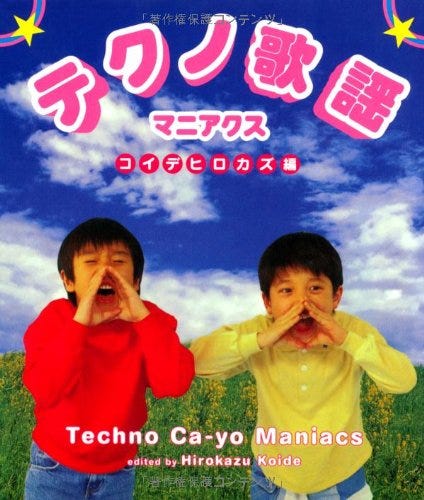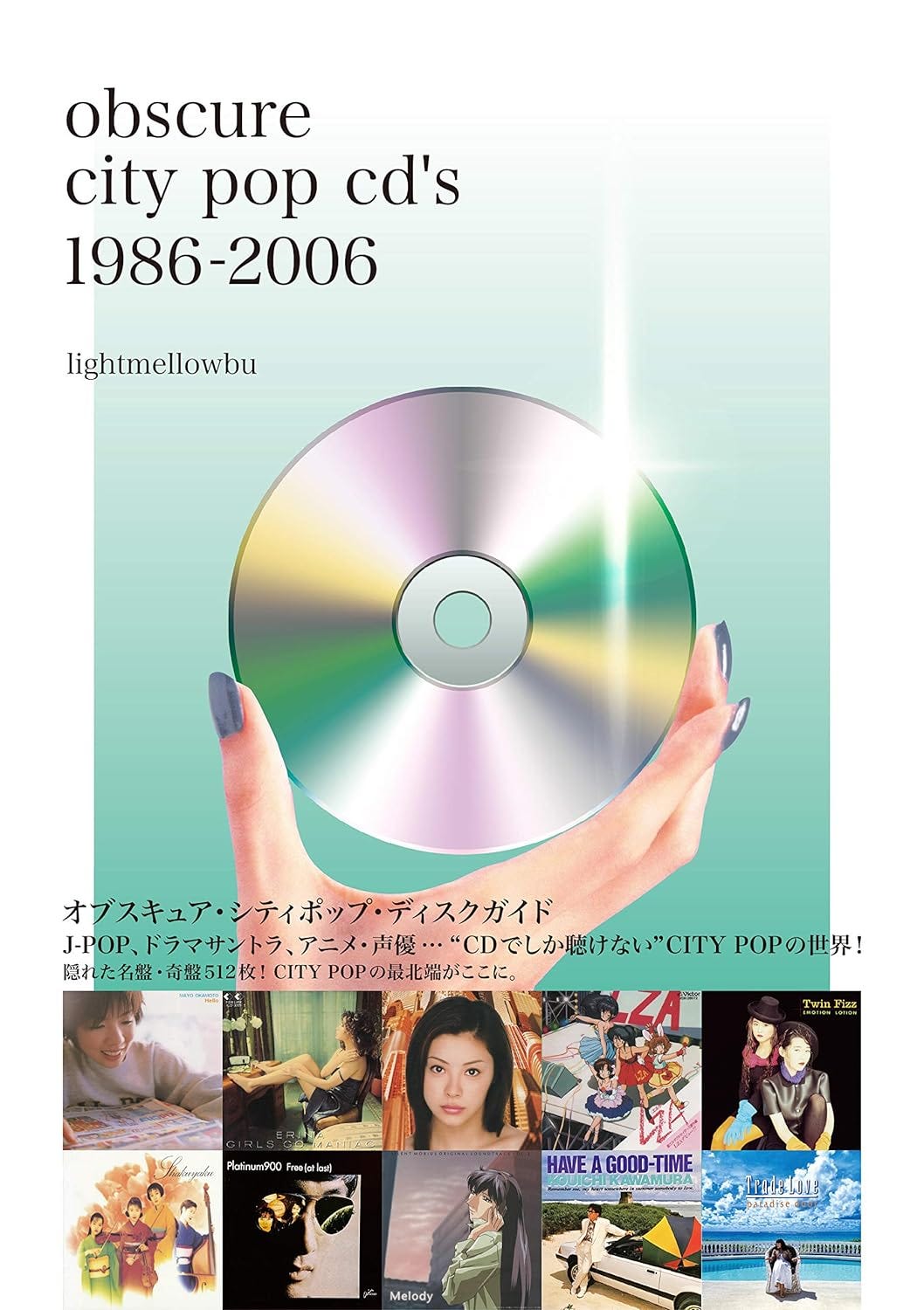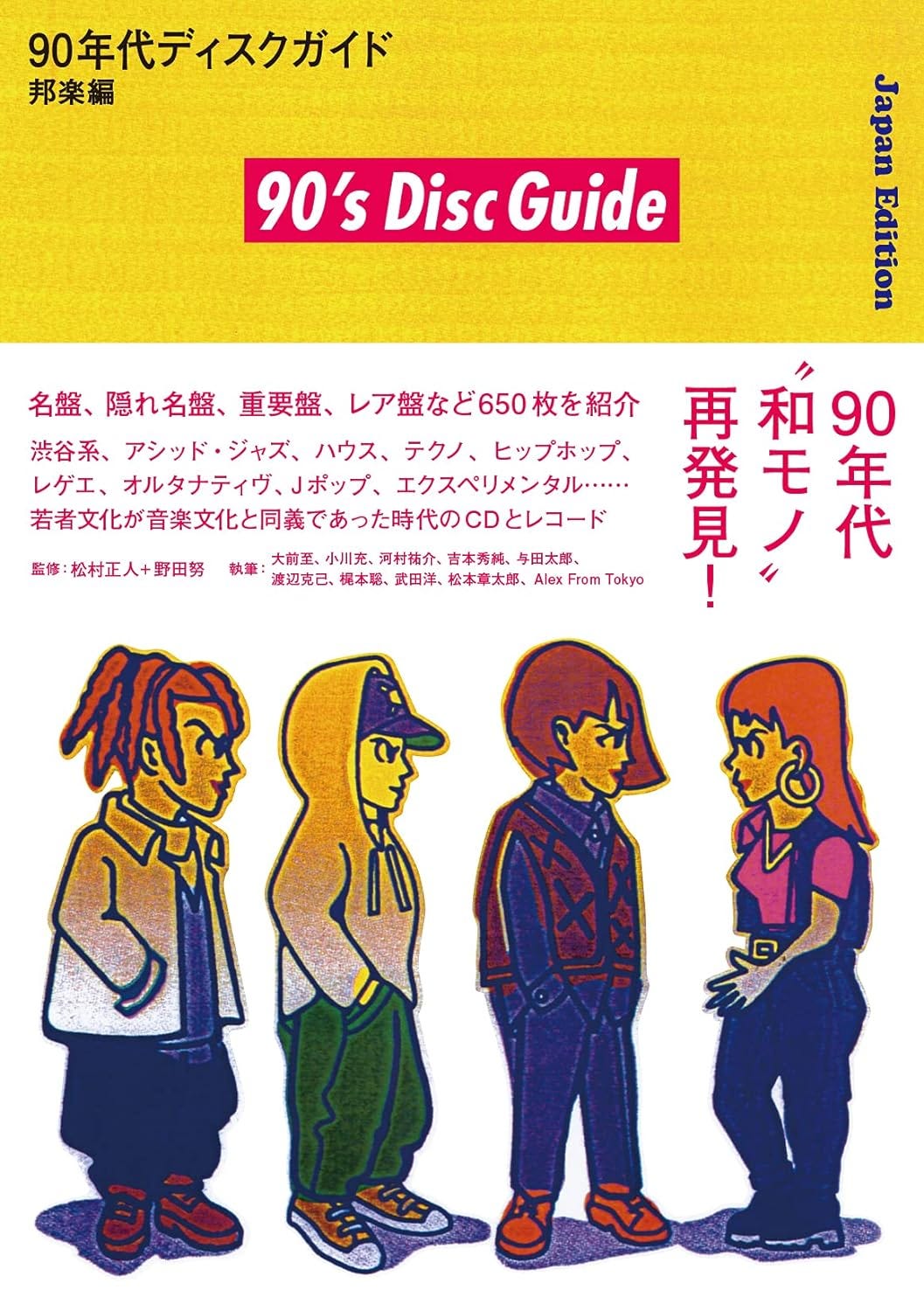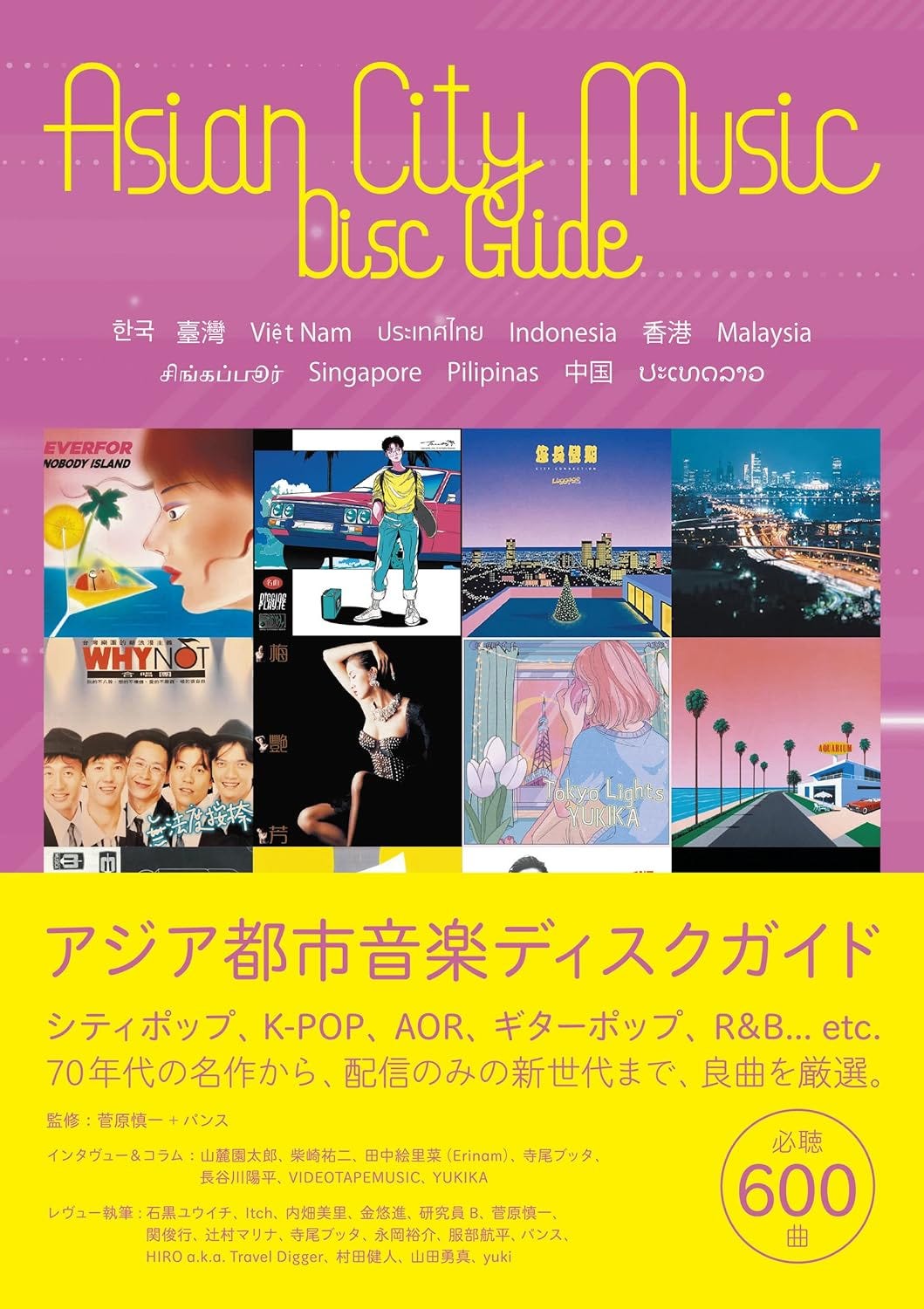As tends to be the case on the platform formerly known as Twitter, discourse centered around music media sprouted up this week that sparked a lot of passionate responses…at least in the corners of X concerned about it. Writer Arielle Gordon wrote the following:
A valid question, interesting thought experiment and firey debate-starter all in one. I’m ultimately less interested in definitive answers or engaging in generational arguments — surely my subscrier count would shoot up if I chose sides more often, but I’m ultimately conflict adverse and fine sitting in the middle here between “the younger generation actually seems pretty great at finding and celebrating interesting music” and “canons are important, because even if you want to kick a canon down you need something there in the first place, just look at Japan” — as I am thinking about the way music history gets recorded. Especially as more and more online outlets that documented decades worth of music potentially get erased.
Which does lead me to an activity I love…revelling in Japan’s continued embrace of physical media despite nearly 20 years of Western observers mocking it, wondering “silly backwards country, why can’t you just fully embrace the internet and streaming, things that will definitely last forever!?” I love it so much that I can turn my head to the right while sitting in my office and see a bookshelf full of assorted magazines, books, and hybrid “mooks” documenting the histories of various eras, scenes and styles, in Japan and beyond.
A huge chunk of those — hundreds of dollars worth! — are “disc guides,” exhaustively researched tomes zeroing in on specific times or styles. They aren’t canons per se — though they often devote some space to highlighting the essentials of whatever they zoom in on — but rather collections aiming to tell a story through both commercial hits, critical darlings and everything around them. To me, they bridge the gap between classic canon consensus and the 21st century urge to explore — disc guides aim to capture periods and sounds in detail so they aren’t lost, both highlighting the biggest releases and pointing the curious in all kinds of other directions.
Here’s a few of my favorite from my personal collection, though there’s dozens more I need to / want to buy. And given how cruddy the yen is right now compared to the U.S. Dollar (or your currency…head to Google!), you could probably purchase most of these at a great rate right now.
Light Mellow Wamono Special
City pop gets much more attention than any other genre or faux-genre represented by Japanese publishing industry. The recent global discovery of funk-and-disco-indebted pop from the ‘70s and ‘80s has helped to accelerate this corner of the disc guide market, but there were nearly half a dozen city-pop-centric disc guides floating around long before “Plastic Love” enjoyed an algorithmic boost. Choosing a best-of-the-bunch isn’t easy, but I lean towards Light Mellow’s 2013 re-pressing of an attempt initially made in 2004 as the overall finest stab at it. Beyond simply running through the many mutations of city pop over the years, the “Light Mellow Attendants” break up chapters with interviews and essays.
Yet the top reason this one stands as my number-one city pop guide is how the team behind correctly identifies how the sound and idea of city pop never faded from Japanese music, but actually continued to evolve well into the 21st century. The final section, titled “UP TOWN NOW,” nails both the way city pop evolved into Shibuya-kei in the late 1980s and how creators like Toki Asako, Hitomitoi and Ryusenkei continued exploring the style in the Aughts, well before it was trendy to do so domestically or abraod. A truly comprehensive history, and one still being written. Buy it here.
Japanese Groove Disc Guide Wamono A To Z
Maybe the single best disc guide I own, albeit one that’s a little more all over the place in focus. While touching on titles associated with city pop, this hefty book veers away from the neon-soaked names that have come to define that style in favor of a wider look at disco, funk, soul, R&B and beyond, offering a more rounded view of pre-J-pop grooves. I’m personally fond of the eagnerness of those behind this guide to dive into the obscure and downright stupid — yeah, you get celebrations of great stuff like AB’S and GWINKO, but they also spotlight various comedians and talents attempts to make it in the music world. This is the book that taught me about Alessandra Mussolini’s disco-pop album years before the stupidest people online found it, and for that I’m…thankful? Buy it here.
Actor Shintaro Katsu’s attempt at kayo-light pop
Techno Ca-yo Maniacs
The worst cover to a disc guide by a mile but…hey, I think there’s a saying about that.
Full honesty: Boogie Idol introduced this book to me back when I interviewed him for Bandcamp Daily. He had brought a whole bag of assorted DVDs, CDs and books to explain his approach to music, and this disc guide was especially recommended. So…I bought it like the moment I got home. Hirokazu Koide does a great job capturing the era of techno-kayou (or Ca-you), both via the high-brow creations of Yellow Magic Orchestra and everything spilling out of that project…and the techno-pop in its wake, now piling up history’s discount bin. The forgotten records, though, tell just as much of this moment’s story as the big names, and here they get elevated up. Buy it here.
obscure city pop cd’s 1986 - 2006
While I appreciate the historian-like bend most disc guides take in documenting a sound or scene, I also have to applaud the lightmellowbu team for this ambitious experiment in alternate worlds. Don’t let the “city pop” in the title throw you off — this is a celebration of the lesser-known pleasures of the CD era, especially odd harbors dotting the J-pop landscape of the 1990s, using the concept of “city pop” as a base but one they gleefully expand the borders of. It’s also explicit about celebrating the literal discount corners of CD shops and Book Offs dotting bedtowns, bringing attention to music that probably would never get another shake, even in the era of everything-all-the-time streaming. Buy it here.
90’s Disc Guide
Japanese music journalists have made a greater push over the past decade to revisit the 1990s, with efforts at constructing canons built around overall quality / impact and how works tied into the decade’s greater media landscape. The very-direct 90’s Disc Guide chooses to showcase the full spectrum of sound pulsing through the country during this period, rather than worrying about where it all ranks. Published by ele-king, the guide is divided into three sections — DJ Culture, Alternative and J-pop though that last one is so short as to almost be a joke, but I kind of love the emphasis on what was bubbling just underneath the Oricon Charts instead — with each one digging into sub-cultures (for example, Alternative features an entire run of “Boredoms and more”). Buy it here.
Asian City Music Disc Guide
If this list of mine has felt like it’s primarily obsessed with looking inward, that’s only because those are the guides I tend to be most immediately taken by. Yet Japanese music writers cover all the sonic terrain, and you can find disc guides for nearly everything — getting as broad as “techno” or “disco” before focusing in on topics like “IDM” and “Soviet Union Funk1.” Name a genre, and you’ll find somebody ready to write 200 pages minimum on every album that you should seek out to truly understand it.
Asian City Music Disc Guide is an absolute triumph, as it does more than simply point listeners towards mutations on city pop that have sprung up across the continent. It’s telling a greater story — both of how Japanese music (city pop, J-pop, and beyond) influenced the nations closest to it, while also offering insights into how every individual nation came to these sounds and how they made them their own. Coupled with interviews and small essays, it’s a great resource to finding new-to-you music and being reminded of the interconnected-ness at play in the region. Buy it here.
New Vaporwave Music Archives 2009 - 2019
Let me take you back a decade, to the dawning of Seapunk. Remember Seapunk? Was it a goof, or something real? Who knows, really. In America, this micro movement came and went, memoralized in one of the weakest ways possible…a Vox explainer video, though they at least talked to artists actually involved with it. Yet for a little bit in Japan, artists actually came across this genre prompt and tried to figure out what their own interpretation of Seapunk could be. The one sticking with me is HNC putting on a Seapunk set at a live show, not as a gag but as an experiment to see what was possible, blending then-prevalent chillwave with new dance developments and bubble sounds. This didn’t last long…but even for a brief time, Seapunk was taken seriously, at least in some corner of the world.
The fretting central to the Tweet at the top of this post is a fear of the past being buried, the cornerstones of music as we (in this case, millenials) know broken by new tech and uninterested kids. A fair worry, but personally not what scares me when it comes to “music culture.” For me, I’m way more nervous about the interesting sub-movements and brief scenes that at one point were deeply influential being forgotten to time. Someone is going to sing the praises of Marquee Moon, but it’s totally possible for a Tumblr-centric web-style to vanish.
Which is why I cherish Japanese label New Masterpiece’s attempt at documenting a decade of vaporwave. Born out of a zine, this book does a better job than anyone I’ve seen of gathering notable vaporwave releases, including highlighting the most important works from this space. The authors also share essays, interview artists, put together an amazing proto-vaporwave list (touching on Ryuichi Sakamoto and the soundtrack to Pilotwings 64) and create diagrams laying out where various labels fall. Above all else, they take it seriously, which is what I love about all of these disc guides. What could be web detritus to some is something worth preserving to others. Buy it here.
Written by Patrick St. Michel (patrickstmichel@gmail.com)
Twitter — @mbmelodies
Follow the Best Of 2024 Spotify Playlist here!
This exists! And I need to still buy it, they have it at the HMV nearest to me but I always feel like “hmmmm, is this overkill?” It isn’t, but we all have to tell ourselves lies sometimes so we avoid buying another bookshelf.













I'm trying to see that Light Mellow Wamono Special something serious! I have an unpublished, "Why do I keep calling it Neo City Pop" post that posits two theories - City Pop as an actual genre with strict temporal/thematic and phonic lines, and (as that guide apparently explores!) City Pop as an ever evolving genre, like R&B. Would love to see the evolution in album form.
Truly gems! If you were tasked with making your own disc guide, what would you do?